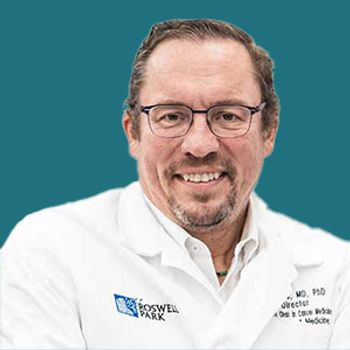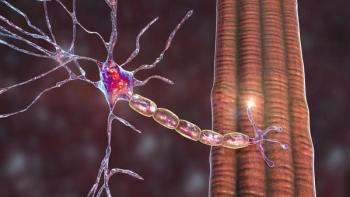
Treating CPS1 Deficiency With Personalized Gene Editing
Kiran Musunuru, MD, PhD, and Rebecca Ahrens-Nicklas, MD, PhD, physician-scientists at CHOP, discussed an n-of-1 clinical trial for a CRISPR gene-editing strategy.
In February 2025 at between 6 and 7 months of age, a child named KJ was treated by Children’s Hospital of Philadelphia (CHOP) investigators in an n-of-1 clinical trial for a personalized CRISPR-based gene editing therapy intended to treat his severe carbamoyl phosphate synthetase 1 (CPS1) deficiency. The news of the treatment was announced to the world by CHOP in May 2025 along with a published paper in The New England Journal of Medicine and a presentation at
At the conference, CGTLive® spoke with trial investigators Kiran Musunuru, MD, PhD, a physician-scientist and Barry J. Gertz Professor for translational research in the Perelman School of Medicine at the University of Pennsylvania and CHOP and Rebecca Ahrens-Nicklas, MD, PhD, a physician-scientist and director of the Gene Therapy for Inherited Metabolic Disorders Frontier Program at CHOP, about the case. They explained the background context behind CPS1, the design of the treatment, and the early results of KJ's treatment.
CGTLive: Can you give a bit of background context about CPS1 deficiency and the gene editing therapy?
Rebecca Ahrens-Nicklas, MD, PhD: We take care of patients that have differences in the way, essentially, biochemical pathways work. Unfortunately, some of the most severe diseases that we care for are the urea cycle disorders. The patient that we worked with in this study has essentially the most severe form of the most severe urea cycle disorder. It's an ultra-rare disease, one-in-a-million, called CPS1 deficiency. With CPS1 deficiency, what happens is that when a baby is born and they start taking protein by mouth and they start eating protein, they can't actually break it down safely. What ends up happening is that they can't get rid of one part of the protein, and it builds up as ammonia. When ammonia builds up, it is toxic and it can lead to being sleepy, not feeding very well, and eventually progress into coma or even death unfortunately. Oftentimes, these babies present very sick within the first 3 to 4 days of life and unless it's identified early and treated, there's a really high risk of death. In fact, for babies with CPS1 deficiency, this most severe urea cycle disorder, about 50% of them die in the first week of life. This is the problem we were trying to address, essentially to try and develop a way to help some of these infants who have incredibly severe urea cycle disorders.
Kiran Musunuru, MD, PhD, MPH, ML, MRA: The work we did was inspired by the recent development of gene editing therapies for other diseases, more common diseases. I'm an adult cardiologist, and one of my goals as a cardiologist is to tackle the world's leading killer, the number 1 cause of death worldwide. Eighteen million people per year die from cardiovascular disease. One way to address that is to reduce cholesterol levels in the blood. One way to do that is to use gene editing to permanently turn off cholesterol genes in the liver. I've been working for more than a decade, initially in my academic lab, and then with a company I cofounded, to make this therapy a reality. It's now in clinical trials and looking very good. You can give a 1-time infusion of this gene editing therapy to a patient, it goes in over the course of about 2 hours, the particles that are used to encapsulate the therapy go straight to the liver, they're taken up by the hepatocytes, and once in there, they deliver the gene editor and then editing happens—in this case, to turn off a cholesterol gene. What we start to see in patients in the trials is reduction of LDL cholesterol by as much as 60% or more occurs within a few days after the patient gets the treatment, and then it's been durable for more than 2 years so far. So we really think it's going to be a lifelong effect. This is something very different than any of the traditional medications that are used for cardiovascular disease, as well as biologics, which typically lasts on the order of a few weeks to a few months.
We were inspired by this because of one nice property of gene editing, which is that it's very programmable. Yes, you can direct it to turn off a cholesterol gene, but it turns out you can use the same exact technology to direct it elsewhere, for example, the site of a genetic variant causing a disease in a very, very, very sick child, a urea cycle disorder, as Rebecca explained. All you really need to do is use more or less the same drug and just change 1 component of a drug, which acts as sort of a GPS and tells the gene editor where to go in the genome, which gene to target, and what location in the gene. So we basically took that same drug and just changed a couple of components, but mostly just the one component, the "GPS", for this one patient's variant. The idea was that the drug delivery would be the same thing, it would be an intravenous infusion and go in over a couple of hours, it would go to the liver, and then once there, the gene editor would find the site of the mutation, the target gene, and actually correct it to the normal version, to the wild-type. The hope was, if we could get this done in enough of the hepatocytes, we might be actually able to improve the patient's disease.
Are there any early safety and efficacy results from the patient's treatment that you can share now?
Rebecca Ahrens-Nicklas, MD, PhD: Our goal, above everything else, was to do this in a way that was safe for the patient, to maximize safety. I'm happy to say that he has gotten his doses of this medication, and so far things look safe, which is great. In terms of efficacy, we really need more time. In all honesty, it's important to realize this is an n-of-1 clinical experience, and so making broad conclusions about efficacy is really difficult, if not impossible. I will say we have some early signs. For our patients with urea cycle disorders, often we have to restrict how much protein they have in their diet, and we've been able to give him more protein, which is great because it helps him to grow. But in terms of long-term efficacy, we just need more time and in all honesty, we need more patients.
Kiran Musunuru, MD, PhD, MPH, ML, MRA: Something worth emphasizing again is that this was a truly personalized therapy. When I was talking about a cholesterol-lowering gene editing therapy, that can be applied to potentially many, many people—everyone at risk of cardiovascular disease, literally millions of people. This drug was made for 1 patient, this 1 kid with this very, very bad urea cycle disorder, and it's tuned to his mutation, to correct his mutation. As such, this drug is only for him. It won't actually work for anyone else because nobody else shares that particular mutation. It’s truly n-of-1, as Rebecca said.
As Rebecca was saying, it's hard to extrapolate from a single patient exactly what level of efficacy there is. There's some early signs that he's better. This is a devastating disease, and I think given what has happened since he has gotten the treatment, I think it's fair to say that he's doing better than we would have expected him to do if he had not gotten the treatment. Make of that what you will. Again, it's hard to draw any firm conclusions and time will tell, but we're very encouraged that the treatment was safe because that opens the door to making similar treatments and giving them to more patients. And any early sign of efficacy is certainly welcome.
This transcript has been edited for clarity.
REFERENCES
1. World's first patient treated with personalized CRISPR gene editing therapy at Children’s Hospital of Philadelphia. News release. Children’s Hospital of Philadelphia. May 15, 2025. Accessed May 15, 2025.https://www.chop.edu/news/worlds-first-patient-treated-personalized-crispr-gene-editing-therapy-childrens-hospital
2. Musunuru K, Grandinette SA, Wang X, et al. Patient-specific in vivo gene editing to treat a rare genetic disease. The New England Journal of Medicine. May 15, 2025. Doi: 10.1056/NEJMoa2504747, LA.
Newsletter
Stay at the forefront of cutting-edge science with CGT—your direct line to expert insights, breakthrough data, and real-time coverage of the latest advancements in cell and gene therapy.











































